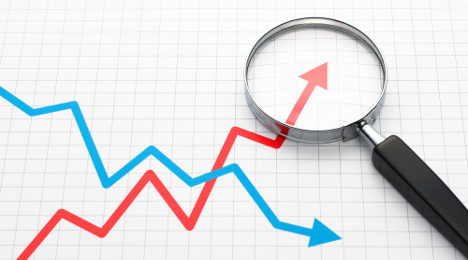April auto defaults drop back below 1%

By subscribing, you agree to receive communications from Auto Remarketing and our partners in accordance with our Privacy Policy. We may share your information with select partners and sponsors who may contact you about their products and services. You may unsubscribe at any time.
NEW YORK –
The auto loan component of the S&P/Experian Consumer Credit Default Indices dropped below 1 percent in April for the first time since last September.
According to data through April and released on Tuesday by S&P Dow Jones Indices and Experian, auto loan defaults recorded a rate of 0.97 percent, down 5 basis points from March. The reading broke a streak of six consecutive months where the default rate stood at 1 percent or higher. That string included the highest point in the past year when it was 1.05 percent back in February.
While dipping below 1 percent, the April reading wasn’t quite as low as the recent low point, which came last June when analysts pinpointed the reading at 0.85 percent.
Meanwhile, the April composite rate — a comprehensive measure of changes in consumer credit defaults — dropped 7 basis points from the previous month to land at 0.86 percent.
S&P and Experian reported that first mortgage defaults came in at 0.69 percent for April, down 8 basis points from the prior month.
The bank card default rate increased 17 basis points in April and 60 basis points year-to-date, recording a default rate of 3.09 percent.
Subscribe to Auto Remarketing to stay informed and stay ahead.
By subscribing, you agree to receive communications from Auto Remarketing and our partners in accordance with our Privacy Policy. We may share your information with select partners and sponsors who may contact you about their products and services. You may unsubscribe at any time.
Looking at three of the five major cities analysts watch for this monthly update, they noticed three metro areas posted an overall default rate increase during the month of April.
Miami reported a default rate of 1.21 percent, up 6 basis points from March.
New York recorded a default rate of 1.01 percent in April, up 2 basis points from the prior month.
Dallas posted a default rate of 0.76 percent, a 1 basis point increase from the previous month.
Chicago’s default rate remained flat at 1.03 percent in April.
Los Angeles was the only city to report a decrease with a 0.71 percent default rate, down 10 basis points from March.
David Blitzer, managing director and chairman of the Index Committee at S&P Dow Jones Indices, offered an upbeat assessment of the April data.
“For two months, the overall consumer credit default rate has dropped to new lows while the default rate on bank cards has climbed,” Blitzer said. “Since the financial crisis, consumers are paying more attention to their debts, particularly longer-term financial commitments such as homes and autos.”
Blitzer highlighted the Mortgage Debt Service Ratio — the percentage of disposable income going to service mortgage debt — is at its lowest point since 1980. He added the Total Debt Service Ratio, which includes loans with scheduled payments, is close to a record low.
Blitzer also mentioned the savings rate is now at about 5 percent of disposable income, slightly higher than its level in 2004-2006.
“In contrast to the low default rates on mortgages and auto loans, bank cards recently showed increased default rates,” Blitzer said. “The longer-term post-crisis decline in the bank card default rate leveled off in 2014. Since then, it has been in a range of 2.5 percent to 3.2 percent.
"Bank card, auto and mortgage default rates are all lower than their pre-financial crisis levels,” he continued. “However, the bank card rate is more volatile than the others and more sensitive to consumer spending trends. Whether the default pattern for bank cards stabilizes remains to be seen.”


